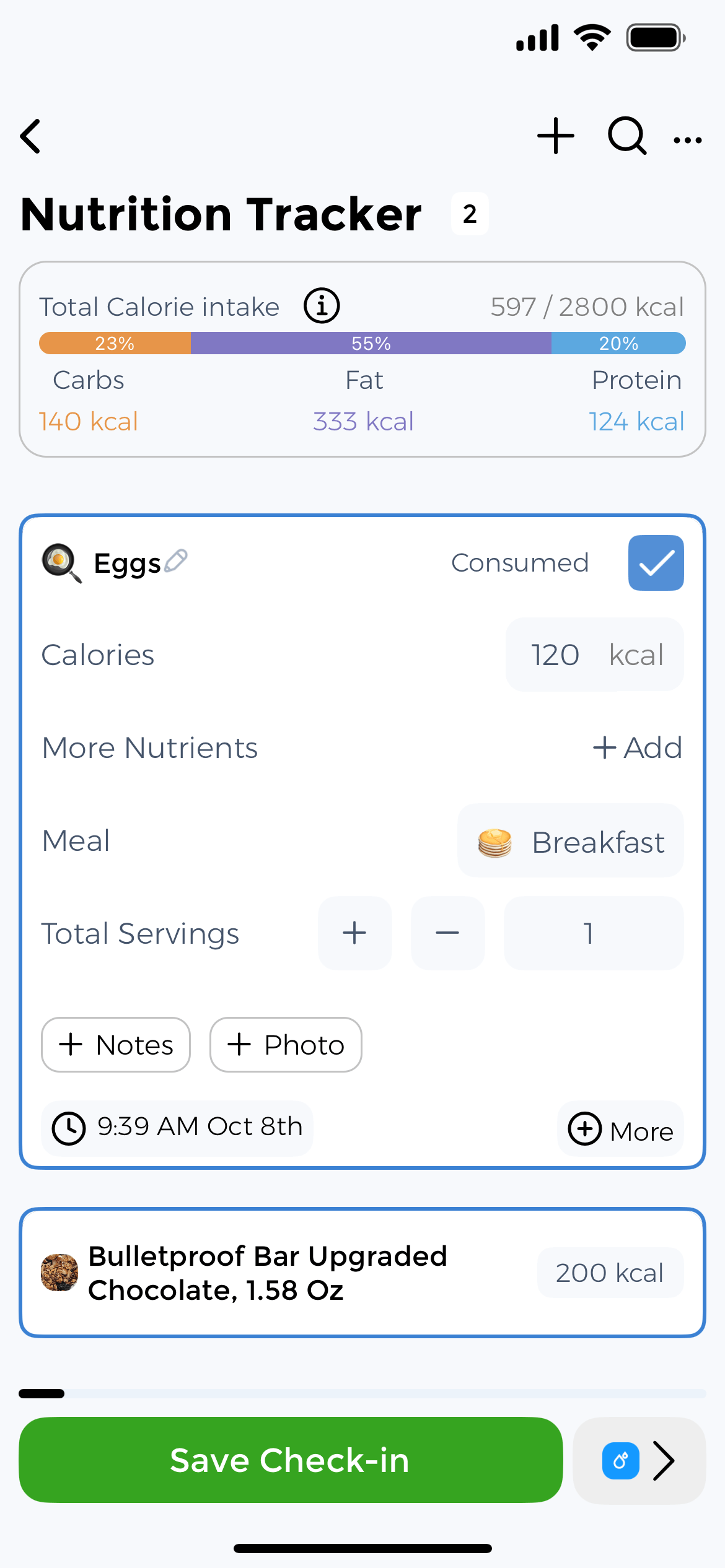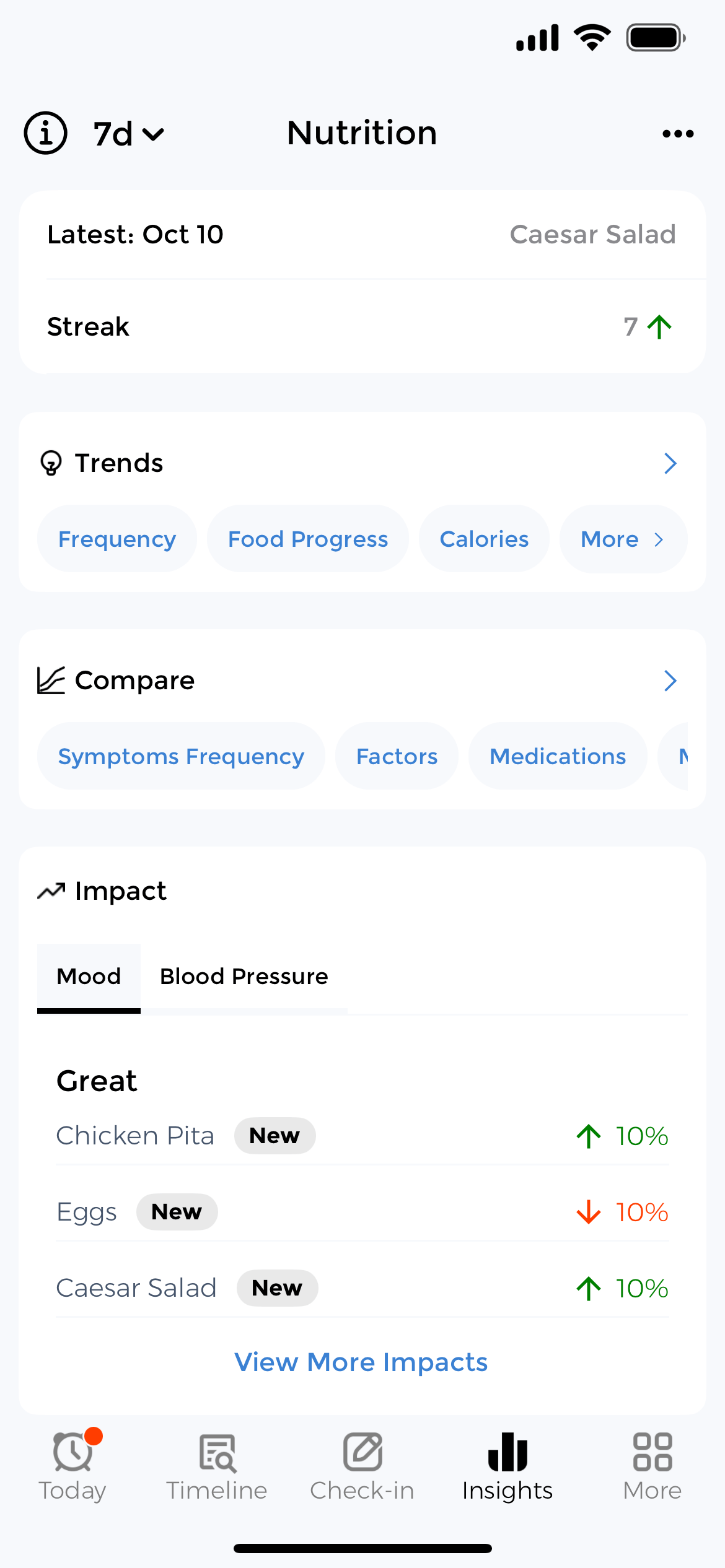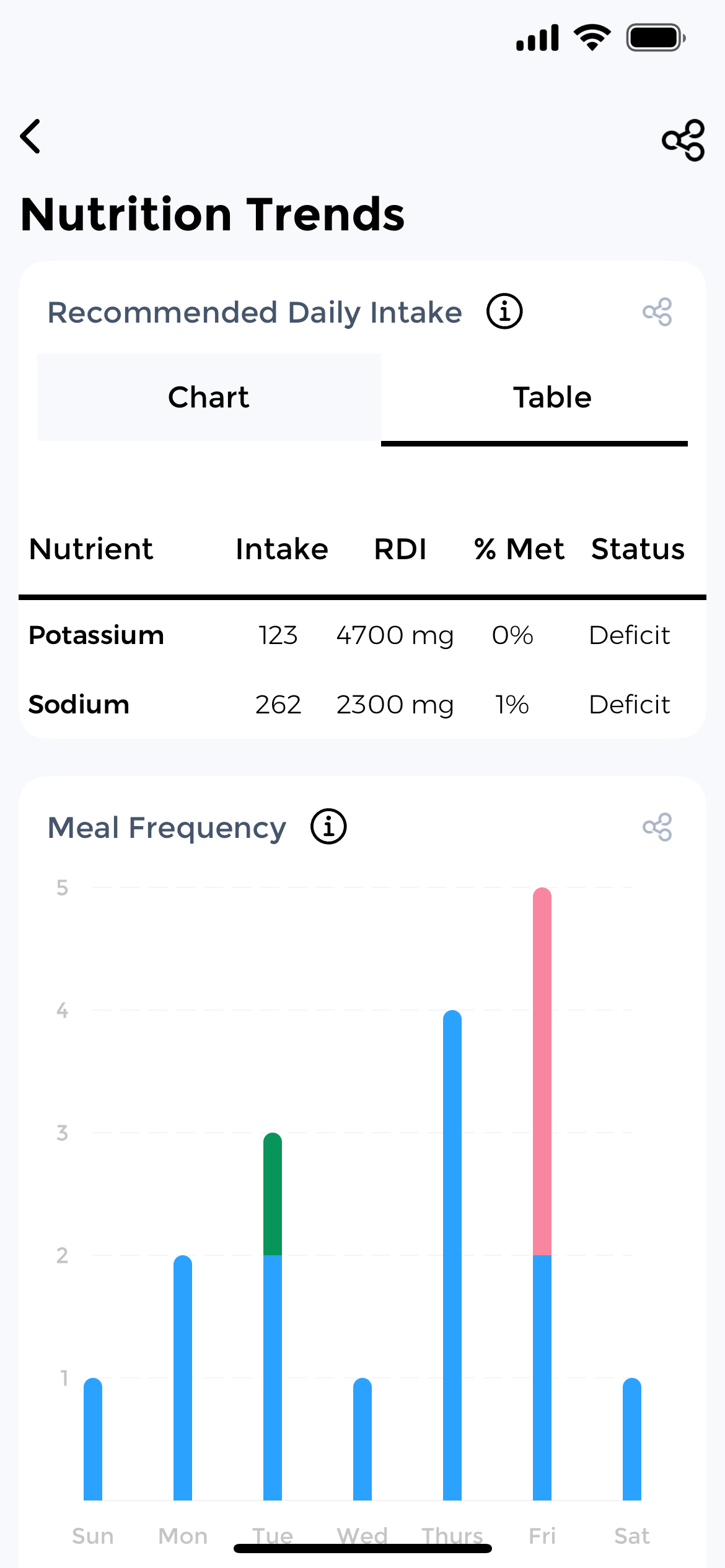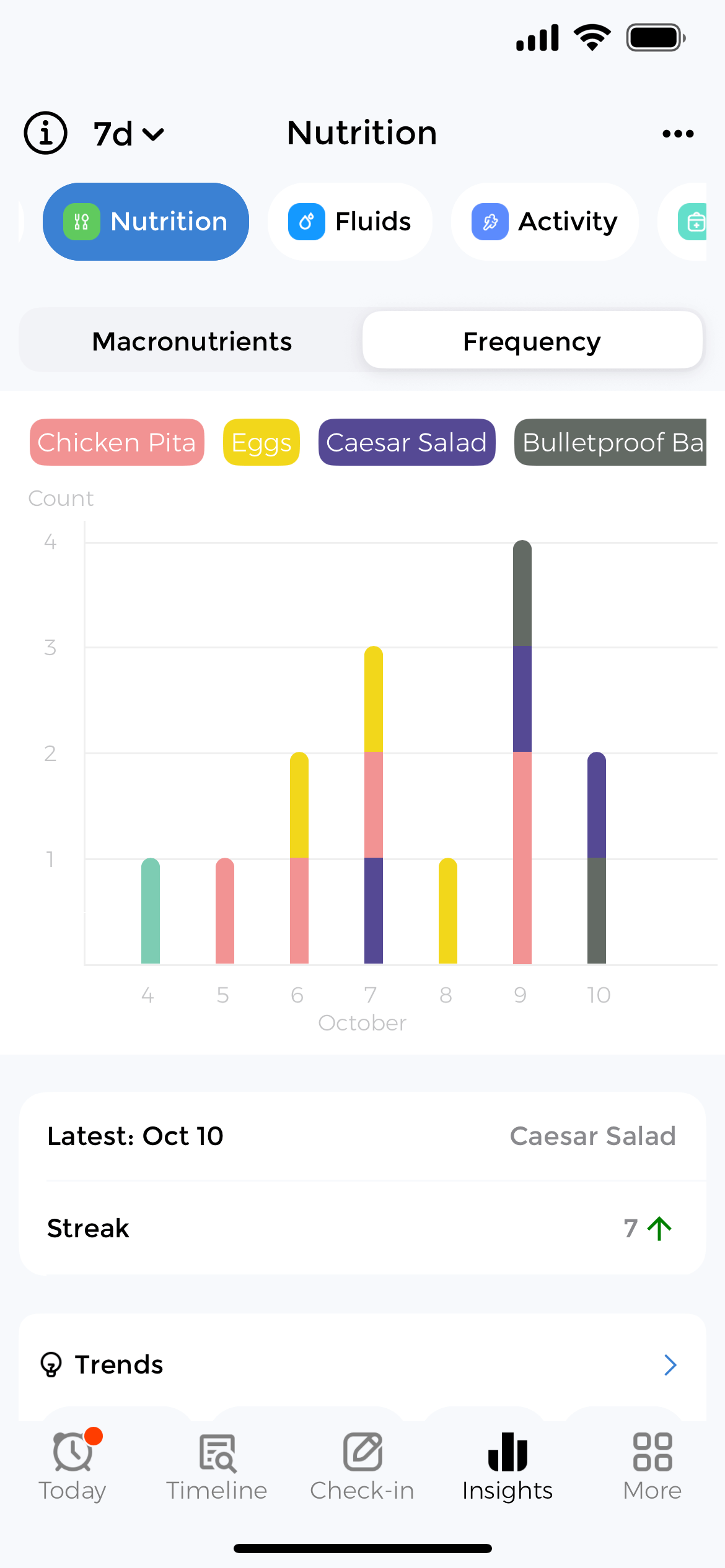Nutrition Tracker
Track what fuels you. Understand what works.
Log meals with barcode scanning, track calories, macros and micros, correlate food with symptoms, and discover patterns that matter for your health.

Why Track Your Nutrition?
Food impacts everything from energy levels to disease management. Track to understand what truly works for your body.
Plus Track Micronutrients & More
How it works.
1. Log Your Meals
Scan barcodes, search 500K+ foods, or create custom meals. Quick logging takes seconds with favorites and meal templates.
2. Track Automatically
Macros, micros, allergens, and daily totals calculate instantly. See progress toward nutrition goals in real-time dashboards.
3. Discover Insights
AI-powered correlation reveals how food impacts symptoms, energy, mood, and health metrics over time.
Log meals in seconds
Barcode scanning, food database, and meal templates make tracking effortless.
See How Food Affects You
Automatically correlate nutrition data with symptoms, mood, and other health metrics.
What You Can Uncover:
Problem: IBS flares feel unpredictable and uncontrollable
Insight: Flares occur 2-4 hours after high-FODMAP meals
Outcome: Confidently avoid trigger foods and share findings with your gastroenterologist
Problem: Blood sugar spikes despite tracking carbs
Insight: Glucose spikes reduced 30% when pairing carbs with protein
Outcome: Adjust meal composition and present results to your endocrinologist
Problem: Fatigue crashes throughout the day with no clear cause
Insight: Energy scores 25% higher on days with 8+ glasses water
Outcome: Implement hydration reminders and track sustained energy improvements
Problem: Migraines strike without warning
Insight: Correlate with tyramine-rich foods (aged cheese, processed meats)
Outcome: Eliminate trigger foods and reduce migraine frequency with measurable results
Problem: Weight loss plateaus despite calorie counting
Insight: Steady loss at 1,800 cal/day with 120g protein
Outcome: Optimize macro targets and maintain consistent progress toward weight goals
Integrated Health Data
CareClinic connects nutrition data with symptoms, mood, medications, and vitals to help identify food sensitivities, metabolic issues, and digestive problems.
- Gastrointestinal Symptom Correlation: Cross-reference dietary intake with bowel movement characteristics via Stool Tracker
- Somatic Symptom Monitoring: Correlate macronutrient timing with energy fluctuations and inflammatory flares using Symptom Tracker
- Psychonutritional Assessment: Track dietary impact on mood stability and cognitive function via Mood Tracker
- Medication-Nutrient Interaction: Monitor drug-induced nutrient depletion through Medication Tracker
- Exercise-Nutrition Synergy: Optimize pre/post-workout nutrition timing via Activity Tracker
Track Nutrition Trends & Patterns
Advanced reporting for medical conditions, elimination diets, and nutrient balance monitoring.
Nutrient Trend Reports
Monitor critical nutrient ratios over time for managing chronic conditions like kidney disease, heart failure, and hypertension.
Sodium/Potassium Balance
Track daily sodium-to-potassium ratio critical for managing chronic kidney disease (CKD), heart failure, and hypertension. Get alerts when ratio exceeds safe thresholds.
Phosphorus Monitoring
Essential for CKD patients on dialysis. Automatically calculate phosphorus-to-protein ratio and track against renal diet guidelines.
Omega-3 to Omega-6 Ratio
Monitor anti-inflammatory balance for managing arthritis, cardiovascular disease, and autoimmune conditions.
Elimination Diet Tracking
Systematically identify problematic foods with start/end date tracking for elimination and reintroduction phases. Essential for managing ARFID, food sensitivities, and eating disorder recovery.
Track Every Phase:
- Elimination Phase: Mark foods as “eliminated” with start dates, track symptom improvements
- Baseline Phase: Monitor symptoms during 2-4 week elimination period for clean baseline
- Reintroduction Phase: Log food reintroduction dates and correlate with symptom flares
- Results Analysis: Visual timeline shows which foods triggered reactions during reintroduction
ARFID Support
Track safe foods, fear foods, and gradual exposure progress
Eating Disorder Recovery
Monitor meal variety, challenge foods, and nutrition restoration
Food Sensitivity Testing
Identify triggers for IBS, migraines, eczema, joint pain
Autoimmune Protocols
AIP, Paleo, Whole30 elimination tracking with symptom correlation
Turn Meals Into Data You Can Act On
Tired after meals? Craving sugar at night? Struggling to connect what you eat with how you feel? CareClinic helps you uncover food triggers, nutrient gaps, and symptom patterns with clinical precision. See which habits boost your energy and which quietly drain it. Stop guessing and start understanding your nutrition.
Reports & Insights
Understand your nutrition with clear, visual reports. Easy to share with your care team when you need to.
Visualize Your Nutrition Data
Professional Healthcare Features
Macro Trends
Visual reports of protein, carbs, and fat intake over time with goal tracking.
Symptom Correlation
Analysis showing how specific foods impact symptoms like bloating or fatigue.
Micronutrient Summary
Detailed breakdown of vitamin and mineral intake vs recommended levels.
PDF Export
Export formatted reports for doctors, dietitians, or insurance documentation.











